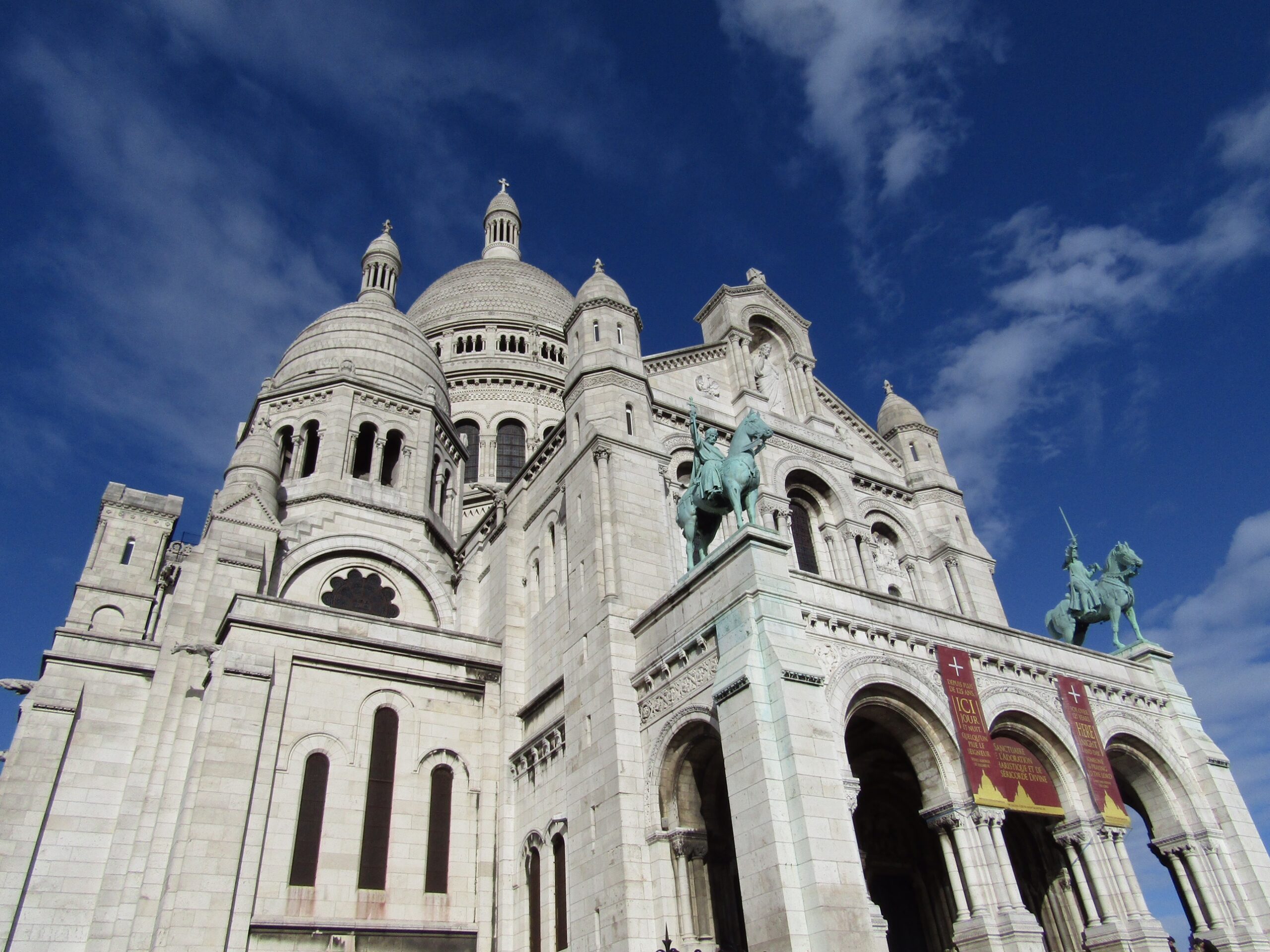For us, traveling is about trying to find a balance. You can’t go to Paris and not see the Eiffel Tower or the Louvre, but our favorite days are when we get off the main tourist trail and into the cities we visit.
On day 14, our fourth full day in Paris, we walked through the Montmartre neighborhood near our apartment. The area is best known for the long, winding hill leading through a historic district up to the white-domed Basillica of Sacré-Cœur (pictured) or as home to the Moulin Rouge cabaret club, featured in the film of the same name.
We started from our apartment at the bottom of the hill, making a quick detour for lunch and sweets along the way. The first stop was the Cafe des 2 Moulins (Two Windmills Cafe) named for the famous Moulin Rouge and Moulin de la Galette nearby. The cafe had become a favorite tourist spot since being featured in the movie Amelie.
Further up the hill, we passed the former apartment of Theo van Gogh. Theo allowed his brother Vincent, at the time a struggling artist who couldn’t afford his rent in Belgium, to live and work in the apartment. Vincent developed his signature style during his time in the Montmartre apartment.
Today, the most famous windmill in Paris is the neon one above the Moulin Rogue, but in the 1600-1700s, more than 30 windmills powered the flour and grape mills on the hill. Built in 1622, Moulin de la Galette is the last remaining functional mill. Just down the hill, Le Moulin du Radet, built in 1717, has been converted to a restaurant.
We turned the corner past one of Paris’s oldest cabaret clubs, Au Lapin Agile where Picasso hung out at the turn of the 20th century, and came upon a small vineyard. Clos Montmartre produces enough grapes for about 600 bottles of wine annually, but was originally planted to stop the growth from urban development in the surrounding area from creeping further into the residential property.
After running a gauntlet of caricature artists on the souvenir shop-lined street of Rue du Chevalier de la Barre, we finally arrived at Sacré-Cœur. The highest point in Paris, the 100-year-old church offers sweeping views of the city below. We ducked inside the cathedral for a look around just as a huge wind and rainstorm passed through, the clear blue skies we’d enjoyed just moments before replaced with menacing, dark clouds.
After the weather passed, we began our descent down the hill. We walked through the small Place du Tertre where Picasso and Renoir honed their crafts as starving artists. Local artists can still be found in the area now populated with cafes and shops.
As we returned to low ground, we made one last stop near the Abbesses metro stop. Many of the city’s metro stops still have the Art Deco-style signs indicating the entrance to the underground, but Abbesses is unique. Its canopy is one of two remaining glass and cast-iron designs of Art Nouveau architect Hector Guimard from the early 1900s.









More Photo of the Day posts from our January-March 2016 trip to Europe


I’ve visited Montmartre many times but I never noticed the Wall of Love!
It’s in a little park called Square Jehan Rictus in Place des Abbesses, right behind the metro stop and carrousel. Usually the park is open to the public, but it was closed due to high winds the day we visited.